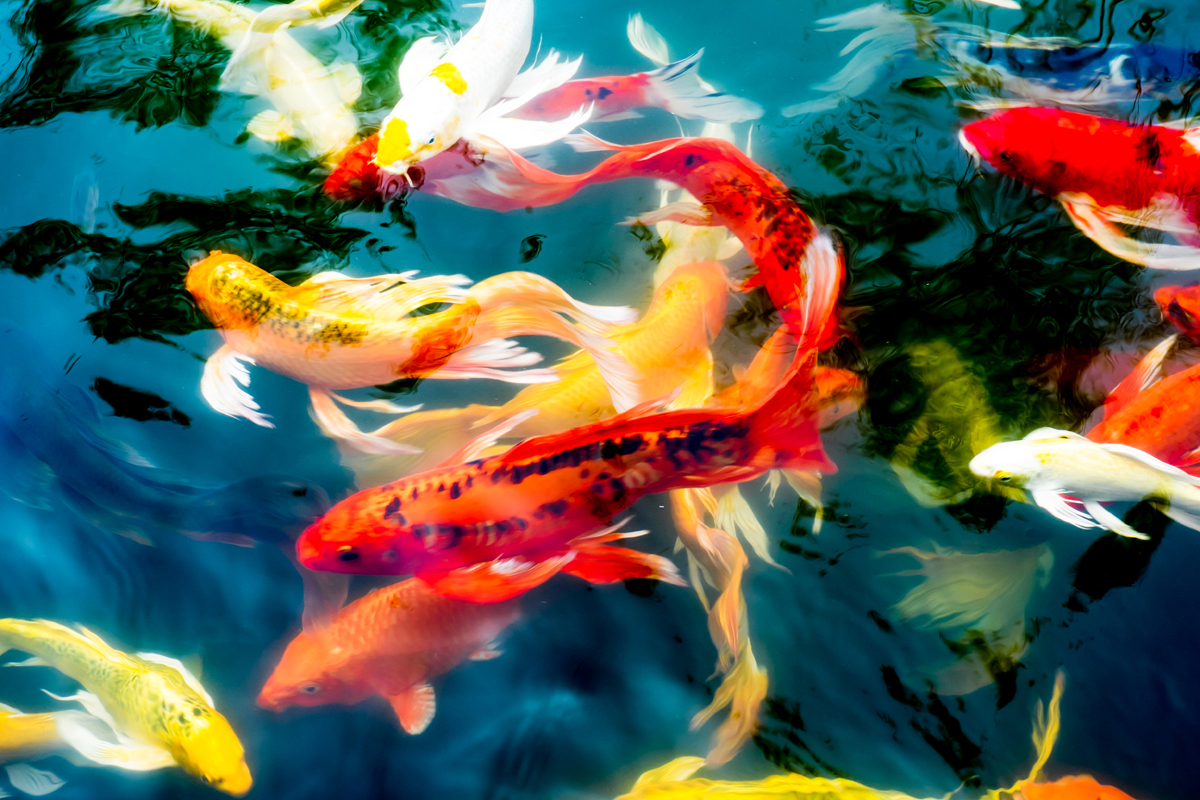Are Koi Ponds Hard To Maintain?
Before installing a beautiful Koi pond in your backyard, it’s important to understand the level of commitment needed to keep the pond in the best shape possible. Let’s take a look at how homeowners can maintain a Koi pond below.
Koi Pond Maintenance Fundamentals
Each and every koi pond will be designed to keep your fish alive and thriving. Professional installers may recommend that your pond meet certain criteria to provide the best situation possible for your fish. Most koi ponds will be larger than fishless ponds.
Average size requirements:
- 3 or more feet deep.
- No less than 1,000 gallons.
- 25 square feet of pond for each koi.
Adding shade to the area is crucial for the koi’s overall health. If the pond sits in direct sunlight, then it’s suggested to add some floating plants to the pond. Most of the pond area should be shaded to give your koi an escape from the sun.
Water plants are essential parts of any koi pond. These plants will help to balance the ecosystem, which creates a natural home for the fish. There are some plants that are oxygenators. These plants help your fish to breathe. Koi fish also eat many of these floating plants.
As long as your pond is not overstocked, these fish do not need to be fed. They can live off insects, algae and other food sources in their environment. Certain plants can be included as food sources.
How To Maintain A Koi Pond
The addition of a Koi pond can transform your outdoor living area. However, you’ll need to address the following issues to keep the pond in the best condition during each and every season.
Seasonal Changes
Depending on the season, Koi ponds will require different levels of maintenance. For example, you’ll have to take some precautions to prevent the pond from freezing over during the winter.
This maintenance task can involve using heaters or aerators to maintain the water temperature while also providing adequate shelter for the fish below. During the spring and summer, you’ll need to monitor oxygen levels more closely than normal. Using air pumps or adding some oxygenating plants can help maintain optimal oxygen levels in the pond.
Feeding
Koi fish are voracious eaters with their diet playing a crucial role in their overall health. Providing the fish with a well-balanced diet is essential.
The fish should eat a healthy mix of commercial Koi food and some fresh vegetables. Overfeeding can lead to health problems and impact the quality of water.
Water Quality
Speaking of water quality, this is one of the most important aspects of Koi pond maintenance. Koi are highly sensitive, requiring clean water at all times for their survival.
You should test the pH levels, nitrite, ammonia, and nitrate content regularly. Installing a high-quality filtration system can help ensure the water remains clean.
Plant Care
Not only does a well-maintained aquatic plant ecosystem add beauty to the area, but it also contributes to the balance of the pond. Pruning regularly and removing any dead leaves are necessary toward maintaining water quality.
In addition, monitoring nutrient levels and ensuring proper plant nutrition is crucial toward the healthy growth of these plants.
Algae Prevention
The spread of algae is a common concern for Koi ponds. An excessive growth of algae can undoubtedly impact the health of your fish.
Make sure to always clean the pond regularly, ridding the water of excess algae growth. The installation of a UV clarifier can also prevent algae.
Koi Health
The health of your Koi fish should always be the number one priority. Always look for any visible signs of illness or injury.
Abnormalities, such as ulcers, red spots, or fin damage, need to be address immediately.
Koi Pond Design & Installation
Start creating your very own Outdoor Fireplace or Outdoor Kitchen in Scottsdale or Phoenix, Arizona by giving Arte Verde a call today at (602) 618-0688 to schedule a free consultation!



